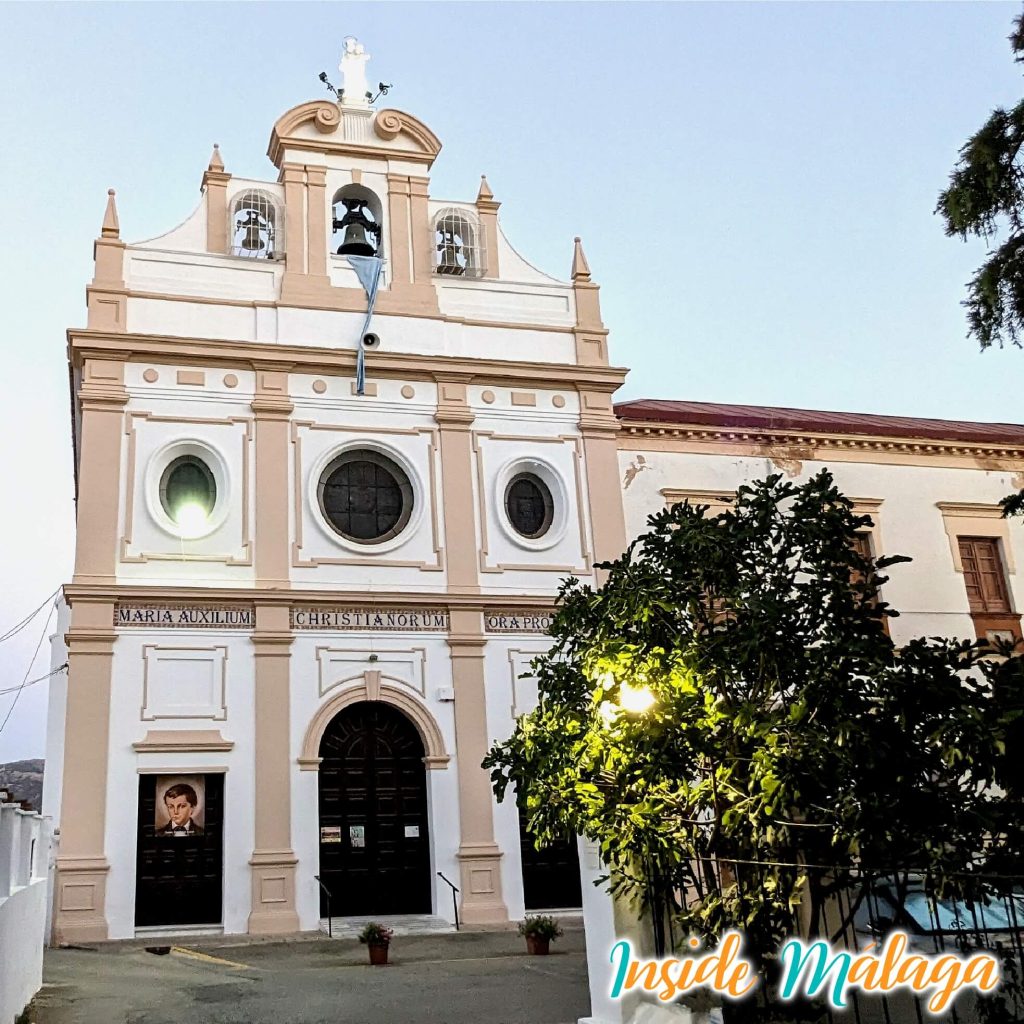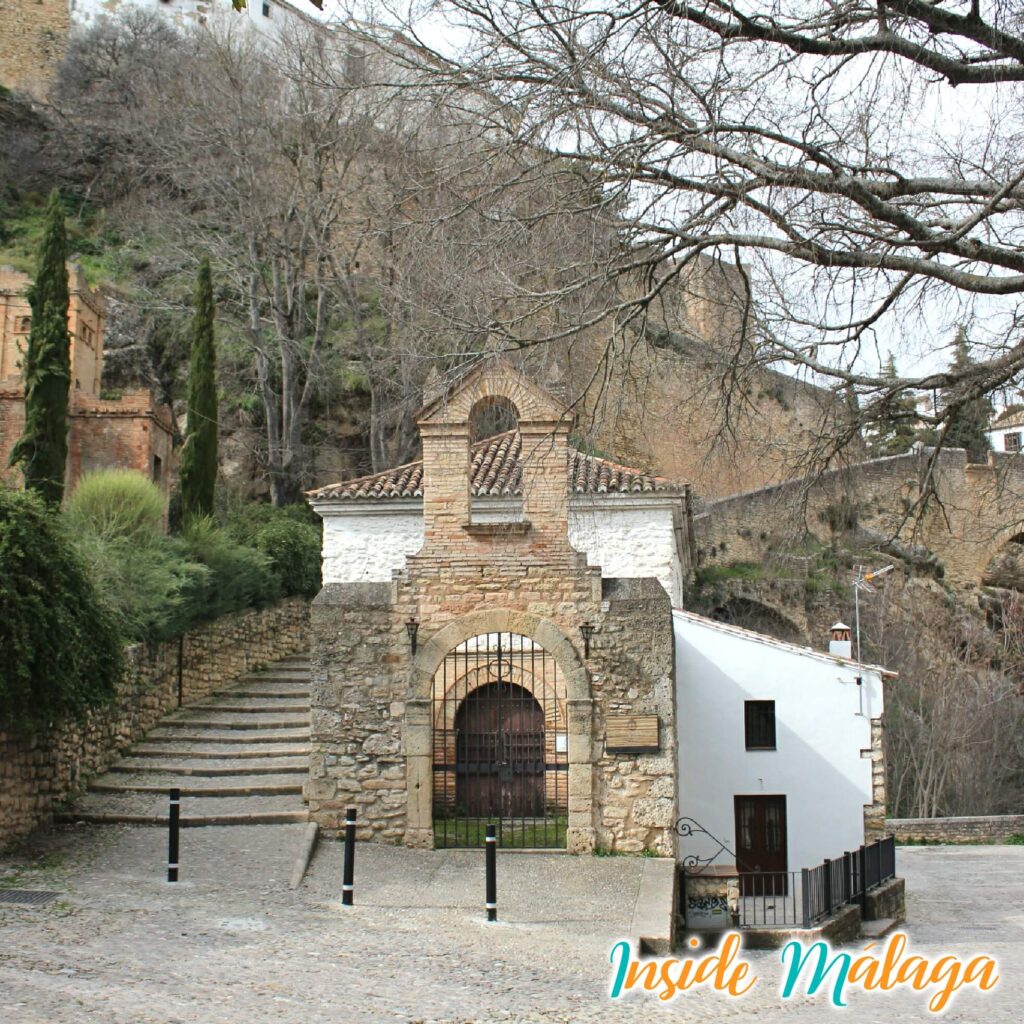The charm of Ronda’s squares, streets and neighborhoods would not be as charming without its religious buildings and temples. Since the capture of Ronda from the Moors in May 1485, numerous religious buildings were built in the city. The sites of the old mosques were converted into churches whose purpose was to promote and consolidate the Catholic religion in the region. Next we will show you all the religious buildings in the City of Ronda. Ronda’s churches reflect centuries of history, art and faith, and bear witness to the city’s deep religious tradition.

IGLESIA DEL ESPIRITÚ SANTO
Location: Calle Espíritu Santo
Located in an old neighborhood, and was built in 1485 on an old mosque. The appearance of the temple is simple brick architecture and has a clearly defensive character. Present a hybrid Gothic-Renaissance style, very typical of the time. The windows are Gothic style but with great austerity.

IGLESIA DE SANTA MARÍA LA MAYOR
Location: Plaza Duquesa de Parcent
The construction of the temple began after the reconquest in 1486 on the old mosque of the city that dates back to the 13th century. At the entrance to the church we find the Mudejar tower that contains remains of the mihrab of the old Nasrid style mosque. Inside it is marked by a Gothic and Renaissance area with architectural wonders.

ERMITA RUPESTRE DE LA VIRGEN DE LA CABEZA
Location: Carril Virgen de la Cabeza
A little-known hermitage also known as the San Antón caves, located in front of the city with beautiful views of the Tajo de Ronda. It is a Mozarabic complex from the 9th-10th century AD. excavated in the rock. The complex formed by three bodies, a place of residence, a place of worship and another with auxiliary caves. The entire Mozarabic cave complex has an interesting baroque chapel attached to it where the Virgen de la Cabeza is venerated every June.

IGLESIA MARIA AUXILIADORA
Location: Plaza Duquesa de Parcent
The church of María Auxiliadora surrounded by gardens next to the town hall. The sanctuary was inaugurated in 1951 as part of the Salesian school located next door.

CONVENTO DE CLARISAS DE SANTA ISABEL
Location: Plaza Duquesa de Parcent
It is located in the charming Duquesa de Parcent square. The convent belongs to the Order of Santa Clara and was built in the 16th century. The tower is made up of three bodies, the first part being made of brick. At the door of the convent we can see the stone shield of the San Francisco de Asís order. You can visit the chapel and they also have a little windown where they sell different sweets that are quite rich and varied.

IGLESIA DE SANTA CECILIA Y NUESTRO PADRE JESÚS
Location: Calle María Cabrera
Built in 1663 on the hermitage of Cristo de las Peñas. The main façade built of sandstone bears the shield of the Trinitarian Order. In 1836 it became an educational center until 1875. During Holy Week two important brotherhoods leave from the church: Brotherhood of Our Father Jesus Praying in the Garden and María Santísima Consuelo de las Tristezas (Holy Monday), and the Venerable Trinitarian Brotherhood of Cristo de los Remedios and María Santísima de las Angustias on Good Friday.

IGLESIA DE PADRE JESÚS
Location: Calle Real
Located in the Padre Jesús neighborhood. Due to its Gothic appearance, it is believed that it was built between the 15th and 16th centuries. According to popular stories, it was the first church in the town dedicated to the vocation of Saint Cecilia. When the New Bridge was built, the population lived their daily lives on the flat part and the church was abandoned. Inside is one of the most venerated images on Holy Thursday during Holy Week in Ronda: Father Jesús Nazareno. The temple, formed by a rectangular floor plan, has three naves separated by semicircular arches.

ERMITA DE SAN MIGUEL Y SANTA CRUZ
Location: Calle Real
Located next to the Arab baths and the old bridge (Also called the San Miguel Bridge). A small hermitage where the synagogue was formerly located, which after the reconquest became a Christian chapel. The workers in the San Miguel neighborhood who work in tanning the skins venerated their saint Santa Cruz there.

IGLESIA NUESTRA SEÑORA DEL SOCORRO
Location: Plaza del Socorro
Temple located in one of the main squares of the city. The church is quite modern, since the original church was burned and destroyed in 1936 during the Civil War. The original church was built in the 18th century. The current building was a completely new construction, there are no elements of the old building.

IGLESIA NUESTRA SEÑORA DE LA PAZ
Location: Plaza Beato Diego José de Cádiz
The church began as a 16th century hermitage. Formed by a single nave covered with a Mudejar armor that was added in a reform in the 18th century. On the front of the temple is the Virgin of Peace, who is the patron saint of the city. We highlight the 16th century façade with a sgraffito plaster added in the 18th century that is currently restored and shining.

IGLESIA Y COVENTO DE LA MERCED
Location: Calle Carlos Cobo Gómez
Built in 1585, it consists of three naves. The façade built with masonry divided with brick pilasters with an octagonal tower. Inside the temple it houses the incorrupt hand of Saint Teresa of Jesus, a piece of silver with precious stones that contains the hand of Saint Teresa of Jesus. For years the hand remained in Francisco Franco’s residence through ecclesiastical authorization. After Franco’s death, the Monas del Carmelo de Ronda was replaced.
For more informatio about Ronda Pueblo: visit the page of the Town Hall.
